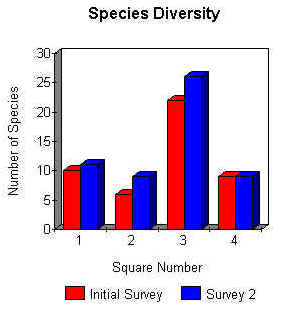|
Rhododendron clearance has resulted in increased species diversity across all areas of the project site, except in the region of Square 4 (Figure 1). This increase in species diversity has occurred very rapidly, in the short space of time that has elapsed since clearance was completed. (This amounted to less than one month in the areas of Squares 1 and 2). |
Figure
1. |

